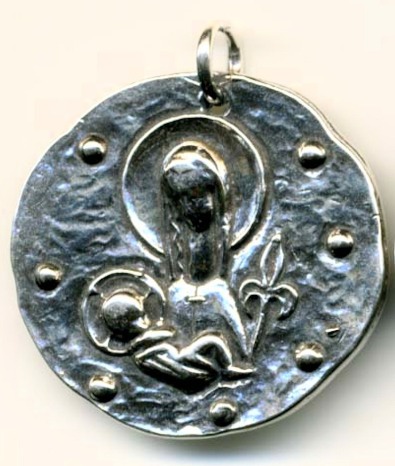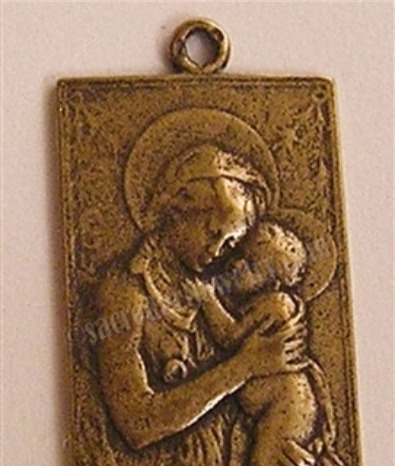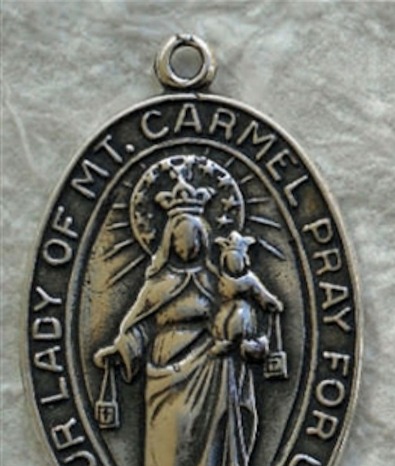|
Blessed Mother Medals Mary, Mother of Jesus Medals _-_Google_Art_Project (1).jpg)
Blessed Mother medalsSymbols Often Found in Our Blessed Mother MedalsFleur de Lis as a Symbol of the Blessed MotherThe fleur de lis is a very popular symbol that King Clovis adopted in the French heraldry in the 5th Century, and Joan of Arc included in her arms in the 14th Century. In addition, at least since 1504, the fleur de lys appears in the nautical rose (or rose of the winds) on maps as a symbol of the North. In the Catholic Church, the fleur de lis represents the Immaculate Queen of Heaven and Earth, whose heel steps on the the serpent's head, who always points to us the way to the Blessed Trinity as the unparalleled Daughter of God the Father, Mother of God Son, and Wife of the Holy Spirit. Fleur de lis in some antique Blessed Mother medals may also the be interpreted as a representation of the mystical presence of angels. The Halo as the Light of the Blessed MotherThe halo, also referred to as a nimbus, is represented in many Blessed Mother medals as a radiant circle or disk surrounding the heads of Jesus and Mary. In both, it is a representation of their highly developed spiritual character through the symbolism of light emanating from them. For Catholics, a halo surrounding a godly or enlightened person represents holiness. Christian artists believed that the halo was symbolic of the light of grace bestowed by God. Halos have been depicted since Hellenistic and Roman times, where the sun-god Helios and the Roman emperors also appeared often with a crown of rays around their heads. Before the rise of Christianity, halos were used, not only to signify divine influence, but also power, majesty or prominence. The Crown as the Glory of the Blessed MotherThe crown of Mary has been portrayed since the 6th century, as "corona virginum" (crown of virgins). The crown has several meanings in secular depictions. The crown is a sign of royalty. A crown in gold and precious stones indicates power and wealth. The ancient laurel crown in the Olympic Games signified victory. In Christian iconography, the crown develops religious meanings. Marian crowns often include elements of victory and glory, especially during the Baroque period. A crowned Mary is usually seen in Jesse Trees, which stresses her earthly royal descent from the House of David, something accorded considerable importance in the Middle Ages. In Blessed Mother medals, she is shown as the mother of Christ, who participates in His kingdom. The 12 Stars on the Blessed Mother MedalsThe twelve stars on Mary's crown depicted in many Blessed Mother medals represent the twelve tribes of Israel, the twelve Apostles, and perhaps the apostles of our times. The twelve stars remind us of the twelve tribes of Israel, the chosen people, chosen by the Lord to prepare the coming into the world of the Son of God. The tribes of Israel form twelve precious stones of the diadem that surrounds Our Blessed Mother's head, to indicate the role of maternal royalty. The twelve stars also signify the twelve Apostles who are the foundation on which Christ has founded his Church. She is Mother and Queen of the whole Church. The Apocalypse, sees it as a great sign: The Woman clothed with the Sun, who fights the Dragon and his army of evil. The stars indicate those who consecrate themselves to her Immaculate Heart, are part of her victorious army, let themselves be guided by Her to fight this battle and obtain the greatest victory, salvation. |



